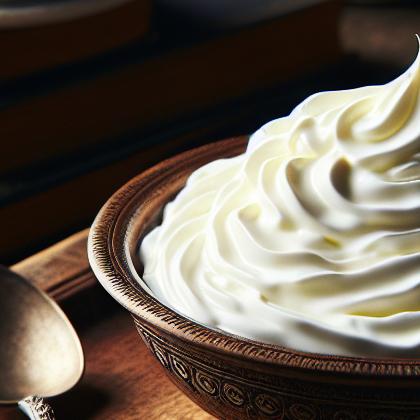Showing results for 'Double cream'
close
Double Cream

Cream is a dairy product composed of the higher-butterfat layer skimmed from the top of milk before homogenization. In un-homogenized milk, the fat, which is less dense, will eventually rise to the top. In the industrial production of cream, this process is accelerated by using centrifuges called "separators". In many countries, cream is sold in several grades depending on the total butterfat content. Cream can be dried to a powder for shipment to distant markets. Cream has high levels of saturated fat.
Double cream Pairs With:
Food Item
Flavor Affinity Level
Double cream Properties:
| Food Property | Type | Description |
|---|---|---|
| Texture | Creaminess | Double cream is known for its creamy texture, which is thick and velvety, perfect for adding richness to both sweet and savory dishes. |
| Nutritional Value | Macronutrients | Double cream is high in fat, containing about 48% fat content, making it a calorie-dense food. |
| Micronutrients | Double cream is not a significant source of micronutrients, as it is primarily comprised of fat. | |
| Cooking Behavior | Heat Conductivity | Double cream has good heat conductivity, making it suitable for thickening sauces and soups without curdling. |
| Water Retention | Double cream has low water content, allowing it to thicken and emulsify dishes without becoming watery. | |
| Aroma | Volatile Compounds | Double cream has a subtle dairy aroma, adding a rich and creamy scent to dishes when heated. |
| Chemical Composition | Acidity/Alkalinity (pH) | Double cream has a slightly acidic pH level, which helps to balance out the richness of the cream in recipes. |
| Enzymatic Activity | Double cream may contain enzymes that can affect its texture and flavor when used in cooking or baking. |
Food Pairing App - Version 1.2.0
